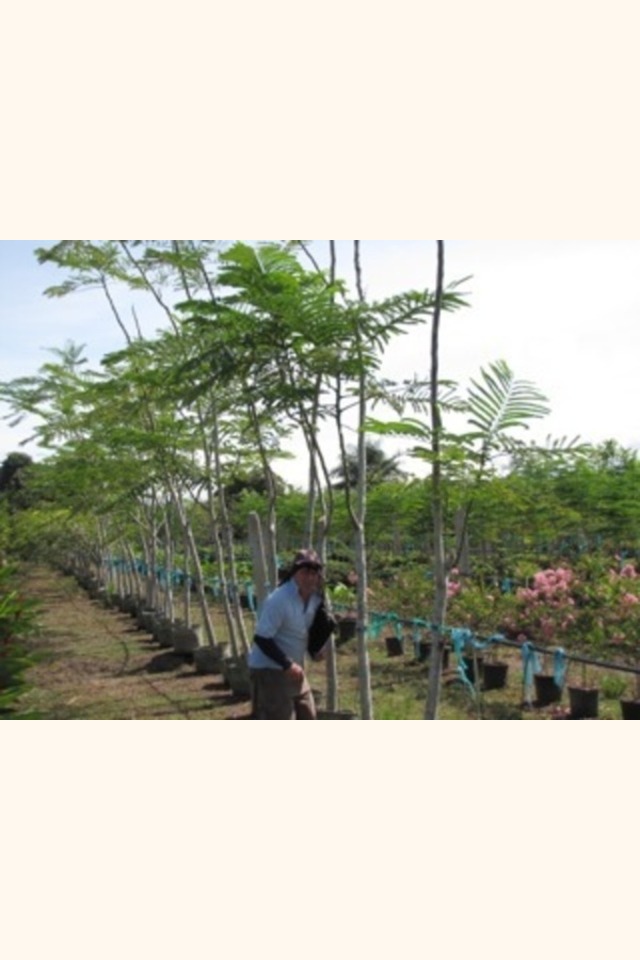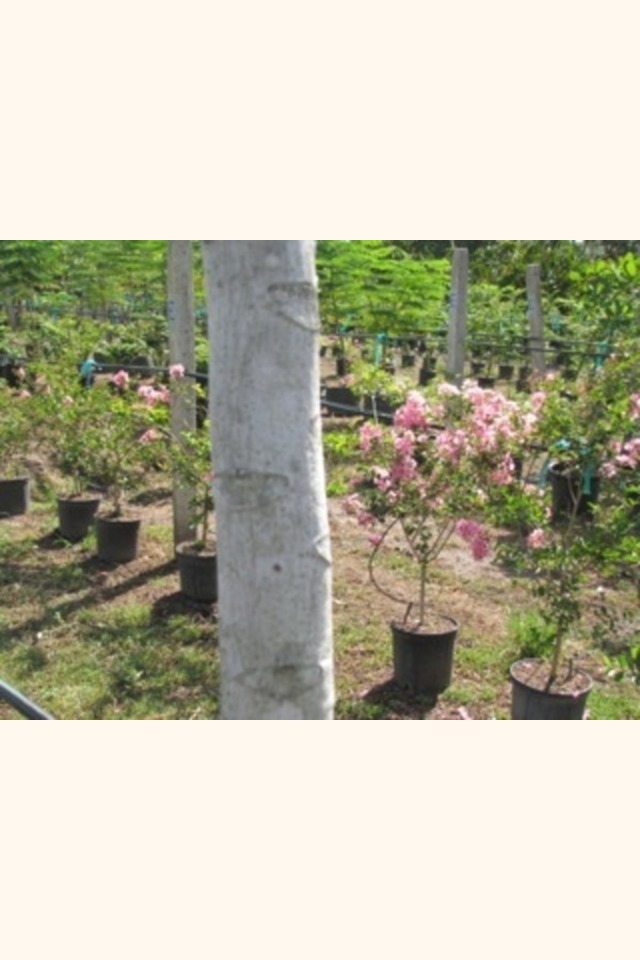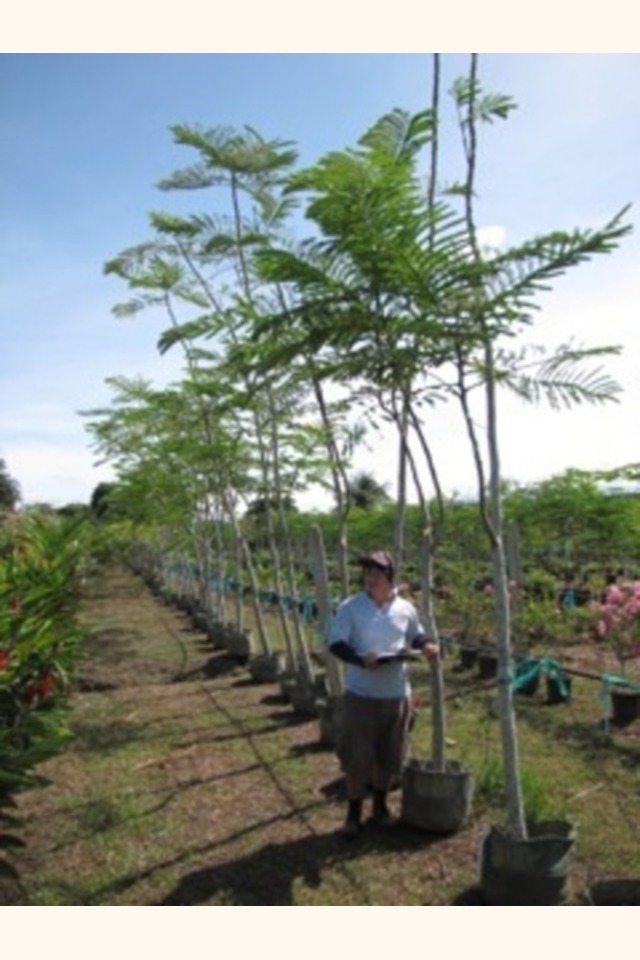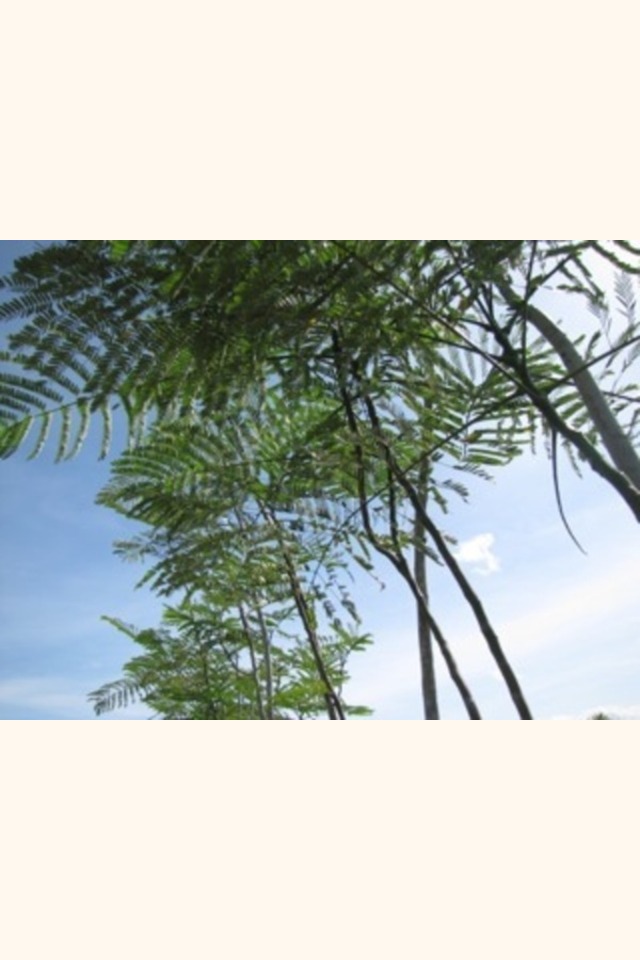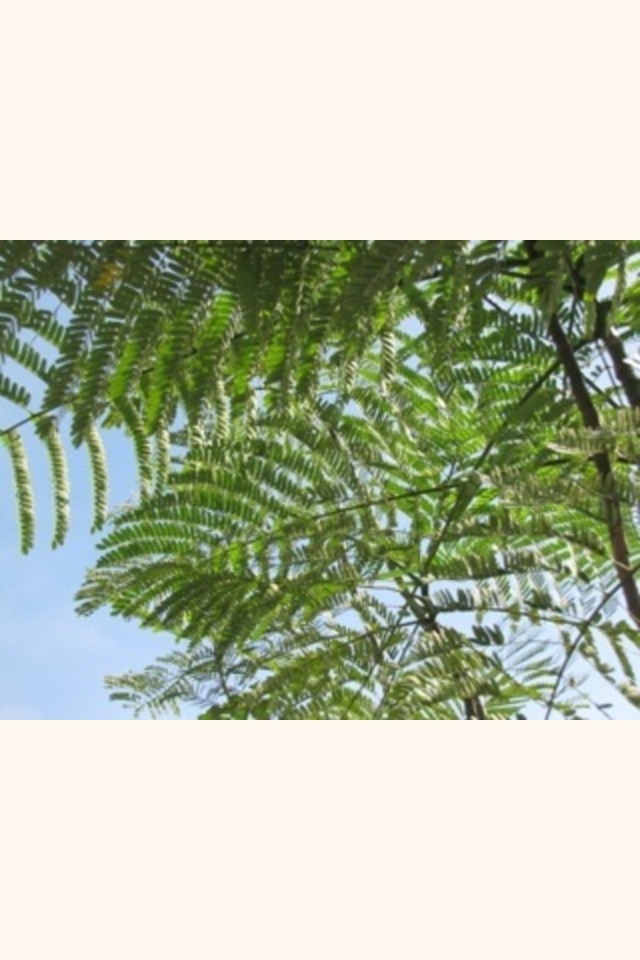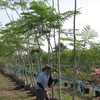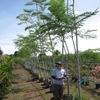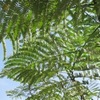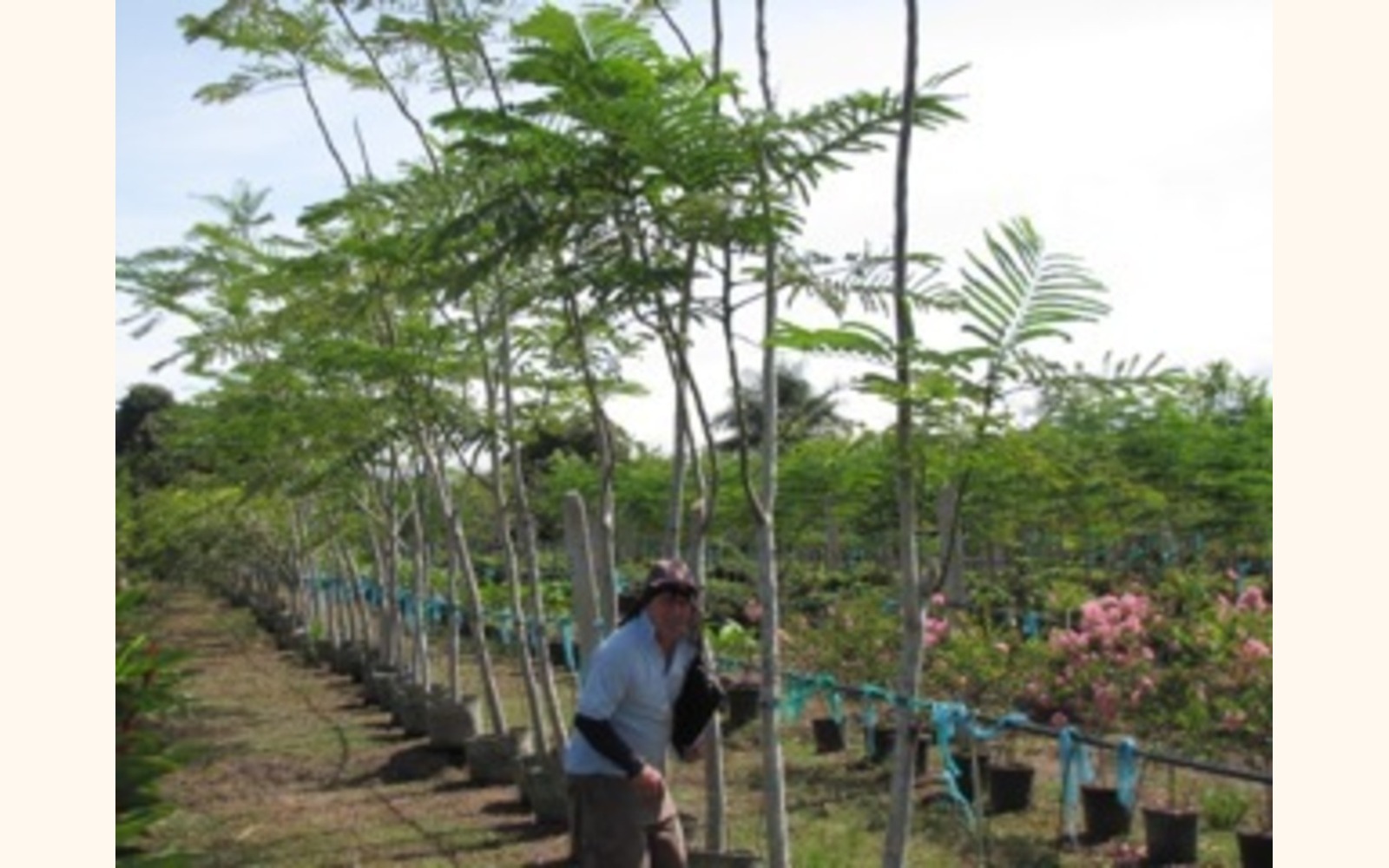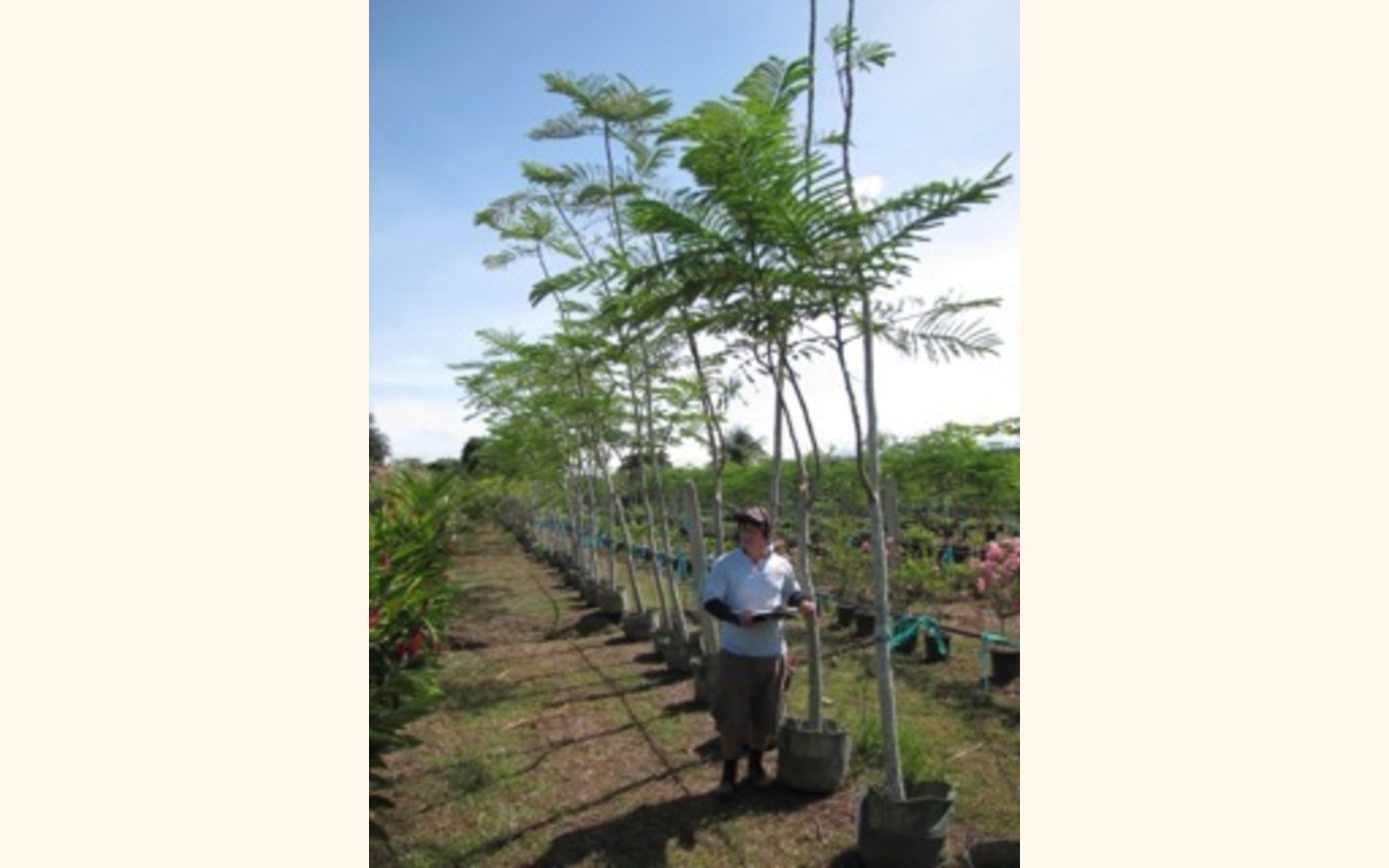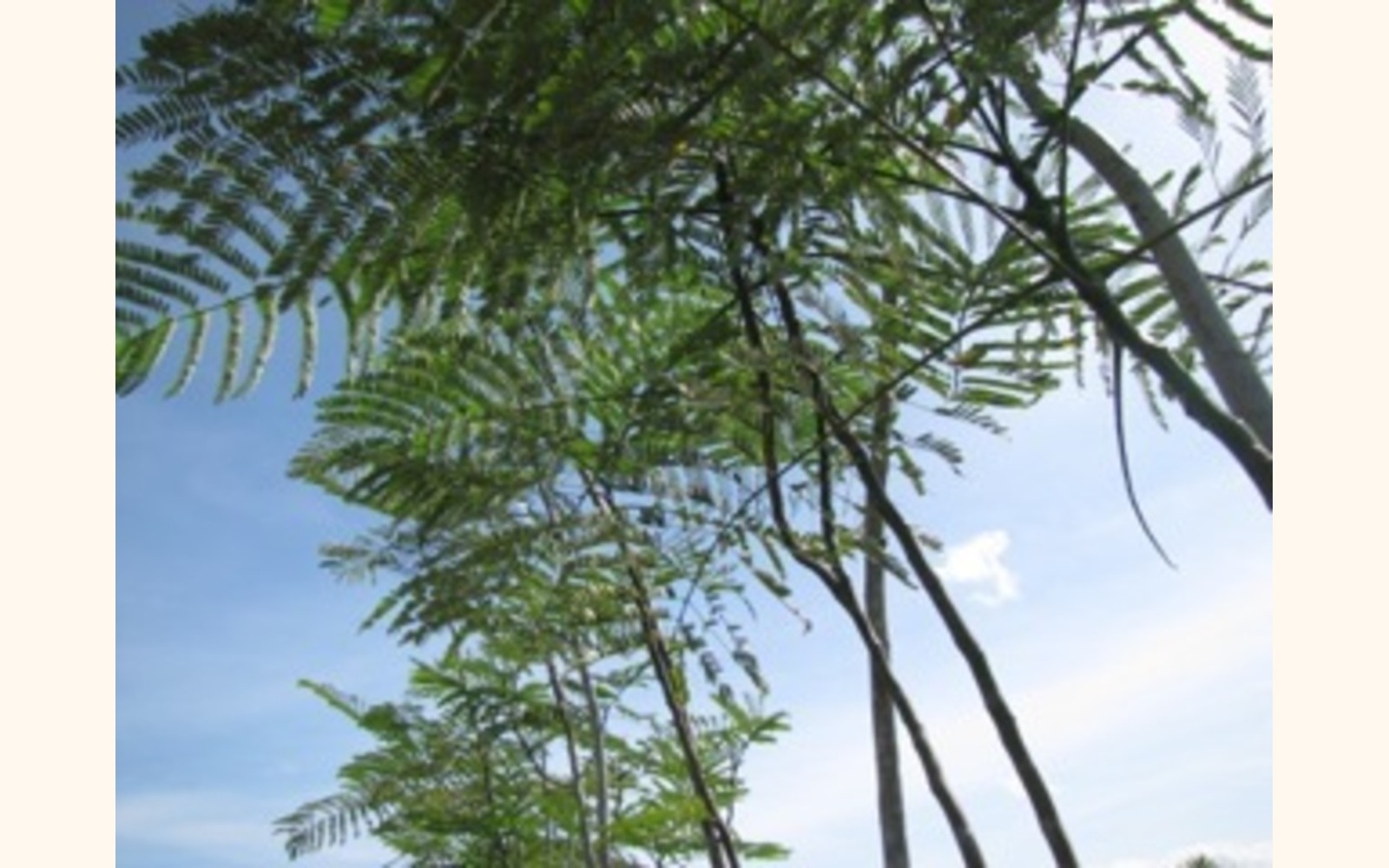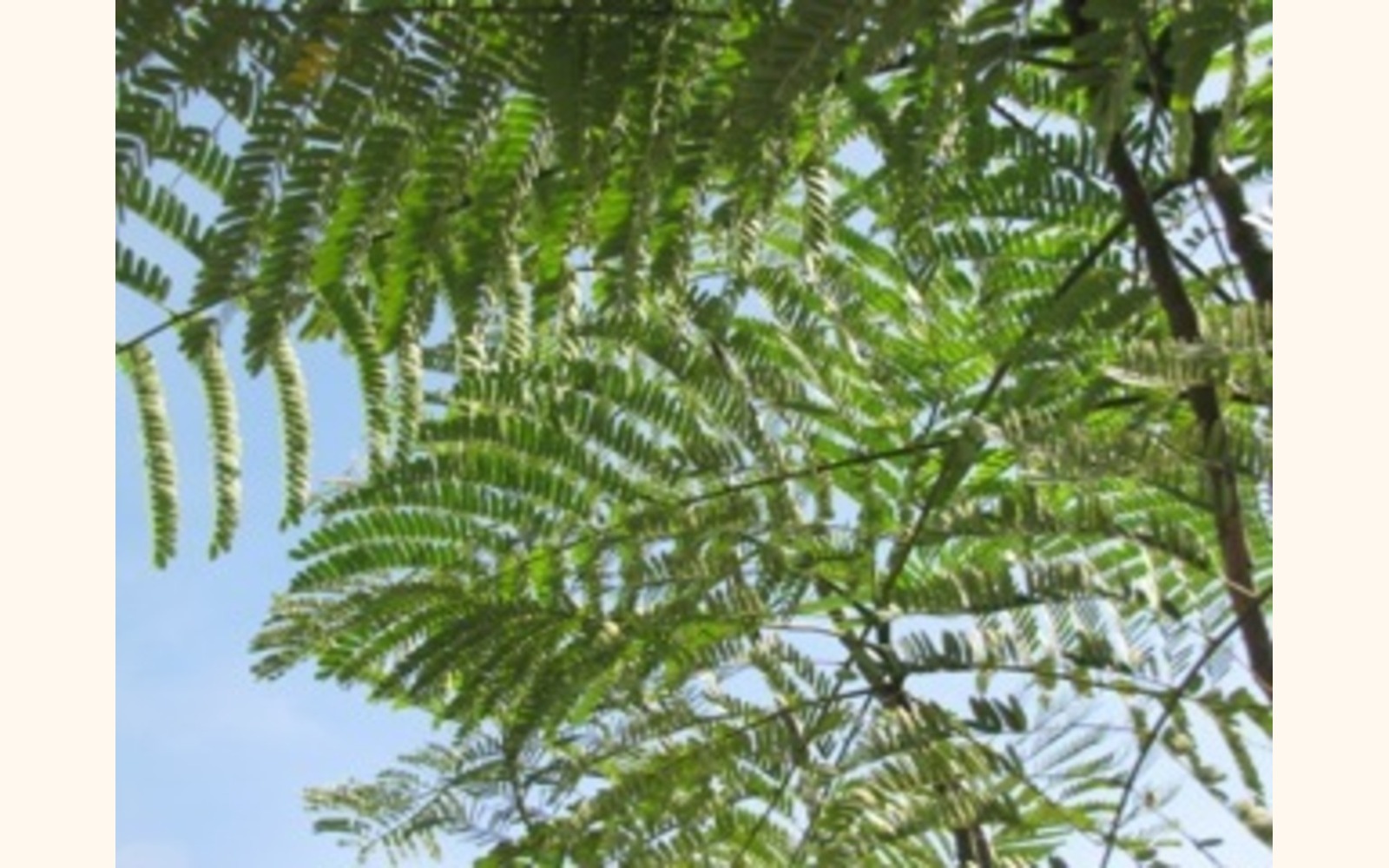
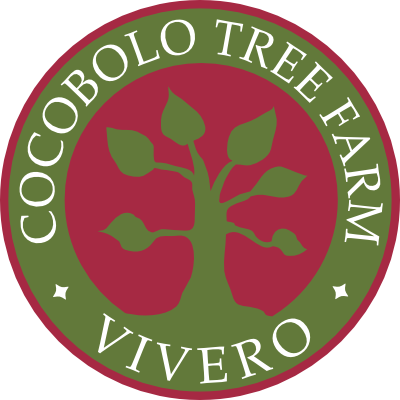
Plants > Ornamental & Shade Trees > Brazillian firetree
Brazillian firetree, Gallinazo
This tree is known for its fast growth of sometimes up to 3 meters a year. The wood is odorless, straw-colored, soft and light. Its density increases with age.
The mature tree typically has a straight trunk, up to 40 meters tall and 80 cm wide, that branches out only near the top. The bark is smooth and gray-green except by the scars left by fallen leaves. The leaves are bipinnate, a metre or more in length, with a green stem and 30–50 opposite pinnae, each with 40–60leaflets 2–3 cm long; they are clustered near the end of the branches, and fall off completely in the dry season.[2] Young individuals, often unbranched and with leaves over 2 meters long, may be mistaken for ferns or palms.
The numerous bright yellow nectar-producing flowers, about 3.5 cm in diameter, bloom after the leaves have fallen off
Plant Characteristics
Leaves
The leaves are bipinnate, a
Fruit
The fruits ripen between April and June. Each fruits is a tadpole-like pod about 10 cm long, containing a single oval seed, smooth and brown.
Flowers
bright yellow nectar-producing flowers, about 3.5 cm in diameter, bloom from October through December
Additional Information
Benefits | Desirability
Formerly used for dugout canoes, it is now used for toys, boxes, shoe heels, the inner layers of laminated wood, and paper.
The leaves contain water-soluble substances that act as antidotes to the bites of Bothrops snakes.(fer de lance)
References
http://en.wikipedia.org/wiki/Schizolobium_parahyba









